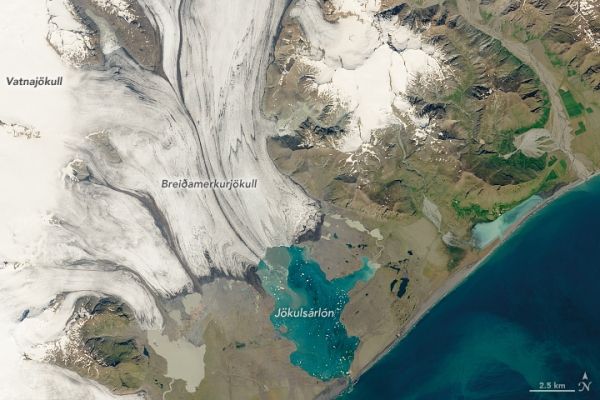The Jökulsárlón glacial lagoon ranks as one of the top tourist destinations in Iceland. Speckled with light blue and milky-white icebergs, the lagoon is one of the world’s most stunning glacial landscapes. However, a century ago, this beautiful scenery did not exist.
Jökulsárlón—meaning “glacial river lagoon” in Icelandic—is a product of a changing climate. It is located at the foot of the Breiðamerkurjökull glacier, which began melting and retreating from the Atlantic Ocean in the 1920s due to rising temperatures. The lagoon started forming around 1935 and grew as the glacier retreated. Since the 1970s, Jökulsárlón has quadrupled in size and now measures around 11 square kilometers (7 miles) wide. At 248 meters (814 feet) deep, Jökulsárlón is the deepest lake in the country.
The image above shows Jökulsárlón and Breiðamerkurjökull glacier on July 2, 2019. The Breiðamerkurjökull glacier is a tongue of the larger Vatnajökull glacier, the largest in Europe. This image was acquired by the Operational Land Imager on the Landsat 8 satellite. The photo below shows Jökulsárlón in June 2019.
Continue reading at NASA Earth Observatory
Image via NASA Earth Observatory


